Today’s chat is going to be super practical and helpful. We’re going to talk about healthy food swaps to help you ditch processed food and…
- how to make the switch to real food (spoiler: there are two key things)
- what is processed food?
- what is healthy food?
- what does real food look like?
- how to find real food and avoid processed food
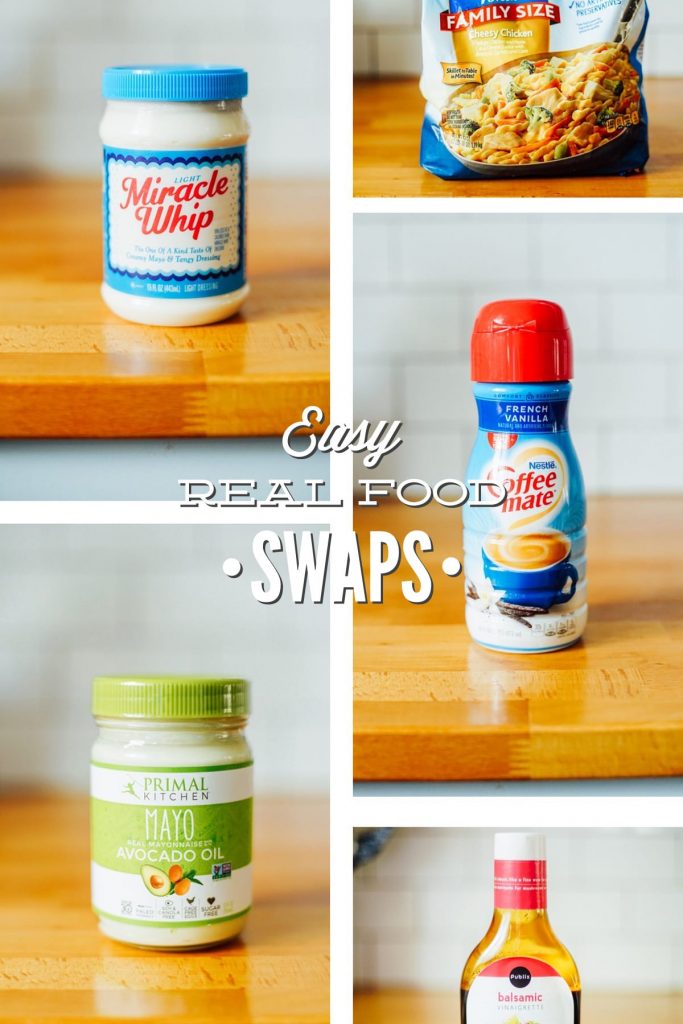
Want to Save This Article?
Enter your email & I’ll send it straight to your inbox. And you’ll get new recipes & tips each week.
Back in 2008…
my family (myself and Dustin, my husband) watched the documentary Food Inc. That documentary opened our eyes to the idea that what were eating might not be what we were intended to eat. That documentary forever changed our lives.
Side note: I don’t recommend basing your dietary decisions or views solely on a documentary, particularly today when everyone has an agenda and will leave out the full story on a topic to prove their point. That documentary was just one little step along our journey; it was the starting point.)
At the time, I felt overwhelmed….
I had just learned about processed food and real food.
- I wanted to ditch the “foods” that weren’t nourishing and supporting our bodies, but I didn’t know how.
- I wanted to make healthy choices, but I didn’t know what was healthy and what wasn’t.
- I needed help!
Over the past 12 years, I’ve navigated these very topics. I’ve read, researched, grocery shopped, read ingredient lists, learned how to cook, and learned how to source real food. Today, it’s my mission to help families navigate how to ditch the processed food and find the simplicity and joy in getting back to the way our great-great-great grandmother’s once lived: sourcing, cooking, and eating real food.
Making the Switch to Real Food is About Two Things
Making the Switch to Real Food is About Two Things
- small, intentional swaps: making your own salad dressing, using real butter instead of margarine, and using real cream instead of fake coffee creamer product, using real maple syrup instead of pancake syrup
- learning to cook using real ingredients
That’s the very heart of eating healthy, nutrient-rich, real food. If you learn those two things (how to make small intentional swaps and cook using real ingredients) you’ll have a solid foundation. From there, you can learn and grow and try your hand at fermentation or shopping a farmers’ market.
Little by Little
This lifestyle is a journey. It's about taking one small step at a time, because that's how lifestyle changes are made!What is Processed Food?
What is Processed Food?
In the past 80 years, our food system has gone through a change like never before. Granted, many changes are amazing. I love my electric oven and fridge. As Michael Pollan says in his book Cooked, “Industrialization isn’t bad. But when we cut corners and forget why we did something for so long, we end up hurting ourselves.”
For thousands of years, (healthy) people have prepared foods in certain ways and for certain reasons. Over the past 80 years, we’ve cut big corners and listened to advertisers and lobbyists (versus tradition) tell us what to eat and how to eat. As a result, we’re now confused about food and incredibly sick. This is what real food is all about. It’s about returning to a traditional way of eating, a way of eating (the only way of eating) that nourished healthy families for thousands of years.
Processing food isn’t bad. When you cook or freeze food you’re processing it. When the word “processed food” is thrown around these days, I cringe.
We don't need to avoid processed food...
instead, we need to avoid food that has been processed to such a high degree that it could only be done in a science lab.Corn is a good example….
Corn can be cooked (sautéed, grilled, steamed), ground into flour (to make crackers, tortillas, cornbread), etc. This is normal “processing” that a home cook would do at home by taking a natural ingredient that’s been consumed for generations and preparing a nourishing meal. Even after cooking, grinding, etc. the corn is still corn–it may look different but it’s still the same food you started with. This food eventually rots, because that’s what food does.
On the other hand, corn may be manipulated to such a high degree in a lab, by food scientists, to make MSG, maltodextrin, hydrolyzed vegetable protein (hvp), flavorings (one part of this mystery ingredient), maltose, high fructose corn syrup, modified food starch, and many more ingredients that a home cook could never make with an ear of corn and kitchen materials. In order to make these foods, you have to process that corn to such a high degree that it no longer is corn. It’s now a substance used to make a product that will be shelf stable for years.
Why Give up Processed Food?
Why Give up Processed Food?
In his book, Food Rules, Michael Pollan (a journalist focused on food) offers us a few facts to consider when thinking about the food we put in our bodies. The first fact concerns the Western diet. The Western diet, also referred to as a Standard American Diet (SAD), usually consists of a lot of processed food, processed meat, lots of added sugars (and many times artificial sugars) and added fats (which are far from their natural state), along with refined grains (white flour, etc).
He writes that societies that have adopted such a way of eating“invariably suffer from high rates of the so-called Western diseases: obesity, type 2 diabetes, cardiovascular disease, and cancer. Virtually all of the obesity and type 2 diabetes, 80 percent of the cardiovascular disease, and more than a third of all cancers can be linked to this diet. Four of the top ten killers in America are chronic diseases linked to this diet.”
Pollan also writes “Populations eating a remarkably wide range of traditional diets generally don’t suffer from these chronic diseases. Traditional diets run the gamut from ones very high in fat (the Inuit in Greenland are an example which subsists largely on seal blubber) to ones high in carbohydrate (example: Central Indians have a diet largely made up of maize and beans) to the ones high in protein (the Masai tribe in Africa live off cattle blood, meat, and milk.)”.
Pollan points out that these are extreme examples. But these serve a point. The new western diet, a diet that’s made up mostly of highly processed food, is making us sick. I know that some folks argue that we live longer today than traditional cultures, but I would point out, as Pollan does in his book, that this is due to improved infant mortality rates as well as improved modern hygiene advancements (<–which I love and appreciate).
What is Healthy Real Food?
What is Healthy Real Food?
I hate the word “healthy” because it’s so subjective. Everyone has an opinion about what’s “healthy.” This is why I believe so strongly in getting back to real, traditional food.
Real food ends the confusion
over what and how we should eat. It ends the wishy-washiness of the health industry. It ends our need for the latest trend or fad diet or miracle supplement powder that our friend from high school is now selling.Knowing what’s healthy is very easy when we look at how healthy people for generations (before the age of ultra-processed food) prepared and consumed foods. Let’s take a look at what real, traditional food is…
1. Real food supports the body; it nourishes the body.
Real food contains vital nutrients, like vitamins and minerals and naturally-occurring fats, that our bodies need for support and to function in a healthy way. Processed food doesn’t offer this. Processed food leaves the body undernourished and lacking the basic nutrients needed to thrive. One of the dangers of ultra-processed food is the lack of variety in the ingredients consumed. Flip over most packaged foods and you’ll find the same “ingredients” repeated: soybean oil, enriched flour, vegetable oil, sugar of some sort, etc. Where are the nutrients? How can the body thrive? When we enjoy real food, we are getting all the nourishment we need from a wide variety of foods that are constantly changing throughout the year.
2. Real food is ingredients.
Real food is about ingredients that are as close to their natural state as possible. Jamie Oliver says, “Real food doesn’t have ingredients; real food is ingredients.” Oats, almonds (almond flour), grains, yogurt, cheese, and meat are all ingredients, used to create meals or, at times, enjoyed on their own.
3. Real food is full of variety and tastes amazing and different.
Ultra-processed food is engineered to always taste the same. For example, a Big Mac is specifically formulated in a lab to always taste the exact same with no variation. Real food, on the other hand, tastes different depending on the variety, the season, and how or where it’s grown. All beef doesn’t taste the same; neither does milk (it actually changes with the seasons as the diet of a grazing cow changes). Cheese changes based on how it’s cultured (a beautiful fermentation process that transforms milk into a beneficial, bacteria-rich food), and tomatoes and lettuce vary in flavor.
4. Real food is seasonal.
Broccoli and peaches aren’t grown year-round. Instead, there’s a specific season in which broccoli and peaches are grown. This is true for all real food. And this is a beautiful thing because it means we are intended to eat variety. Our body needs a variety of nutrients, and the seasonal shift in food provides us with this variety in a very natural way. Processed food doesn’t have any variety (it’s all made with the same nutrient-less ingredients), it just appears to be different from the packaging.
5. Real food has a face and name.
Real food is grown by someone, raised by someone, cared for by someone. Food is not just a substance. Real food has a story. Ultra-processed keeps us at a distance from how our food is grown and raised. Real food, on the other hand, puts us back in touch with where our food comes from and puts us in charge of how to use this food to nourish the body.
What Does Healthy Real Food Look Like?
What Does Healthy Real Food Look Like?
Here’s the foundation of what real food looks like.
- Grass Fed, Pastured Meats: Animals that have been raised and fed as they were intended when created, with grass underneath and the sun overhead. We use all parts of the animal, including the bones for nourishing broth. Chicken, beef, lamb, pork, and wild game.
- Eggs: From chickens that have been raised on pasture, roaming free with lots of sunlight.
- Fats: Naturally-occurring fats that have nourished healthy families for thousands of years, such as: butter from grass-fed cows, coconut oil, ghee, extra virgin olive oil, avocado oil, tallow, and lard. Learn more about fats and oils 101.
- Grains, Nuts, and Seeds: Whole grains and minimally-processed with an emphasis on ancient grains and variety: spelt, kamut, einkorn, even whole wheat. Also, ancient practices, such as sourdough bread, if possible. Also: beans, nuts, and seeds.
- Fruits and Veggies: Preferably in season and grown as local as possible, using organic practices. Including lots of fresh herbs. Cooked, raw, and fermented. While organic produce is encouraged, I don’t always buy organic produce. I use the EWG list when shopping at the store. And if purchasing from a local farm or market, many farms aren’t “certified organic” but use organic practices.
- Dairy: Raw or pasteurized and full fat from grass-fed cows, or goats or sheep. I only recommend purchasing raw milk if you know the source and have checked out the farm for cleanliness and safety. Pasteurized milk can be found in the store. I recommend avoiding ultra-pasteurized milk, since this milk has been heated to such a high degree that it kills everything. Anytime you see the words low-fat or fat-free you know a lot of junk has been added to compensate for the loss of nourishing fat. Dairy includes: milk, cheese, cream cheese, sour cream, yogurt, kefir (a fermented yogurt drink), cottage cheese.
- Salt: Real, unrefined salt that hasn’t been stripped of its nourishing minerals. I use Real Salt.
- Seafood: Raised in the wild versus a fish farm.
- Sweeteners: As close to the natural state as possible, such as: raw honey, pure maple syrup, and minimally-processed sugars. Learn more about Sweeteners 101.
- Beverages: Water and beverages made with real ingredients: tea, coffee, kombucha (a fermented tea), milk (from nuts, seeds, or dairy). Even wine and beer, and cocktails–just watch the ingredients and stick with crafting your own cocktails using simple liquors and fresh ingredients.
How to Eat Real Food and Avoid Processed Food
How to Eat Real Food and Avoid Processed Food
Companies spend billions of dollars every year on marketing food products. Companies certainly don’t make it easy to navigate through all the food choices in the grocery store. In fact, they make it harder than ever to tell what’s made with nourishing ingredients and what’s full of rancid and hydrogenated oils and fats, loads of sugar, flavor enhancers, artificial and “natural” flavorings, synthetic preservatives, and artificial dyes.
So, how can we eat real food and avoid ultra-processed food? I have three rules to simplify this…
1. Prepare your own food.
It’s that simple. If you buy ingredients and prepare your food at home, you’re naturally going to avoid a ton of ultra-processed food. Sharing real food recipes is something near and dear to my heart because you can’t eat real food without learning how to cook. That’s why you’ll find a ton of real food recipes here on the blog.
That said, eating real doesn’t mean you have to make everything from scratch. You can certainly buy food in a package. You just have to be smart about doing so.
2. When buying food in a package (box, jar, can, bag, etc.), read the ingredient list.
The key to avoid processed food is to ignore the marketing labels on the front of the package (i.e. natural, vegan, heart healthy, made with fiber, made with ancient grains, gluten-free, made with real fruit, etc.) and find the ingredient list, then read it. That’s the only way to find out what’s actually inside that food package (whether it’s actually food or a nutrient-less substance).
3. Ask yourself 4 questions before buying any food that comes in a package.
- Are the ingredients real foods? Get to know what real food looks like. We talked about what real food looks like earlier.
- Could I purchase the ingredients from the store and make this food at home? The answer will help you determine if the food in question is made with real ingredients. Have you ever been able to purchase “natural flavor” from the store?
- Are the ingredients necessary? This is one reason why learning to cook is important. When you know how to make salad dressing, you know that many of the extra fillers (like natural flavor or maltodextrin) are not necessary. The same goes for yogurt, bread, granola bars, mayo, etc.
- Are the ingredients as nutrient-dense as possible (for a packaged food option)?
With these rules, it’s easy to find and eat real food.
9 Healthy Food Swaps to Help You Ditch Processed Food
9 Healthy Food Swaps to Help You Ditch Processed Food
Now, let’s take a look at some easy swaps you can make right now that will help you ditch the processed food and eat real food. Making these swaps will instantly make what and how you eat healthier.
The Real Food Plan
Start with the following swaps and focus on reading ingredient lists and cooking your own food the majority of the time.Swap 1: Table Salt < Unrefined Salt
Salt is not the enemy. We need salt. Salt flavors food, it preserves food (this is why salt has been used traditionally to ferment and cure foods before the age of refrigeration). Table salt is stripped of minerals (creating an imbalance between sodium and naturally-occurring minerals) and anti-caking agents are added.
The Swap:
Instead of table salt, use unrefined salt. Salt that hasn’t been stripped of its naturally-occurring minerals. Look for sea salt or Himalayan salt (ranging from white to gray to pink in color). I love Real Salt, a brand that harvests right here in the States. I purchase a 10lb tub since it’s the best deal. You’ll find unrefined salt in most stores.
Swap 2: Margarine < Real Butter
Margarine Ingredients: Vegetable Oil Blend (Canola, Palm, and Olive Oils), Water, contains less than 2% of Salt, Pea Protein, Natural and Artificial Flavors, Sunflower Lecithin, Vitamin A Palmitate, Beta-Carotene (Color), Vitamin D, Monoglycerides of Vegetable Fatty Acids (Emulsifier); and Potassium Sorbate, Lactic Acid, Calcium Disodium EDTA (To Preserve Freshness)
Can you source calcium disodium EDTA from your local grocery store or a farmers’ market? Nope, because you need to make most of these ingredients in a lab!
The Swap:
Go with real butter, not a butter product like margarine. The ingredient list on butter should look like this: cream and maybe salt. If you can find grass-fed butter (Kerrygold butter is an easy find in most stores), go with that option.
For now, stick to making the switch to real butter versus grabbing the margarine tub, even if it tries to entice you with trendy “health” words like plant-based, vegan, or heart healthy. Remember, those words are just marketing terms used to sell you a product. If you can’t consume dairy right now, stick with coconut oil, olive oil, or ghee (yes, dairy but many people can tolerate ghee since the milk proteins are removed). The only butter alternative I recommend, based on ingredients, is Mykonos brand.
Swap 3: Ultra-Processed Mayonnaise < Real Mayonnaise
Miracle Whip Ingredients: Water, Soybean Oil, High Fructose Corn Syrup, Vinegar, Modified Cornstarch, Eggs, Salt, Natural Flavor, Mustard Flour, Potassium Sorbate As A Preservative, Paprika, Spice, Dried Garlic
Swap out the mayo made with vegetable oils and soybean oils for one made with nourishing fats (olive oil or avocado oil). Say no to a list of ultra-processed ingredients, such as: natural flavor (this doesn’t tell you the actual chemicals used to make this ingredient) and modified food starch.
The Swap:
The only ingredients needed to make mayo are oil, lemon or another acid like vinegar, egg yolks, and salt. A real food preservative, like rosemary extract, will be used in store-bought options since the product needs to be shelf-stable. Make your own mayo or go with one of these brands (available in health food stores and main grocery stores): Chosen Foods, Primal Kitchen, Sir Kensington.
Swap 4: Bottled Salad Dressing < Homemade Salad Dressing
Store-Bought Vinaigrette Dressing Ingredients: canola oil, water, balsamic vinegar, vinegar, salt, sugar, contains less than 2% of: xanthan gum, garlic, onion, potassium sorbet and calcium disodium EDTA as preservatives, caramel color, natural flavor, maltodextrin, cornstarch, paprika (color)
Most store-bought dressings contain vegetable oils or canola oil as well as natural flavorings (a mystery ingredient), colorings, and preservatives.
The Swap:
Make your own salad dressing. This is one of the easiest foods you can make as the only ingredients needed are oil, an acid, and salt. I recommend this vinaigrette dressing, homemade ranch, blue cheese, or Caesar. If you need to buy dressing, look for a dressing that contains ingredients you could buy from the store. Primal Kitchen is a great brand for store-bought dressing.
Swap 5: Coffee Creamer < Cream and Milk
Coffee Creamer Ingredients: Water, Sugar, Partially Hydrogenated Soybean and/or Cottonseed Oil, and Less than 2% of Dipotassium Phosphate, Disodium Phosphate, Mono and Diglycerides, Color Added, Cellulose Gel, Cellulose Gum, Carrageenan, Natural and Artificial Flavors, Sodium Caseinate (a Milk Derivative)
That ingredient list is shocking. That’s not creamer, that’s a chemical sh*t storm. I don’t even need to explain why you should ditch the fake coffee creamer after looking at the ingredients.
The Swap:
Use whole milk, a plant-based milk (almond milk, cashew milk, canned coconut milk or cream), or use heavy cream (just cream on the ingredient list), or half-n-half. If you want an actual “coffee creamer,” make this recipe or go with half-n-half (such as Organic Valley brand).
Swap 6: Flavored Yogurt < Plain Yogurt Flavored Your Way
Flavored Yogurt Ingredients: cultured pasteurized grade A nonfat milk and milk, sugar, strawberries, blueberries, water, red raspberries, blackberry puree, modified food starch, pectin, carrageenan, natural flavors, elderberry juice concentrate (color), citric acid, vitamin A palmitate and vitamin D3
Flavored yogurts might sound healthy (I mean, who doesn’t want berry flavored probiotics in a cup?), but they’re usually loaded with sugars, natural flavors (that mystery ingredient), and sometimes even artificial colorings, preservatives, and synthetic vitamins (difficult for the body to use). The one above contains fruit, but many don’t even contain fruit despite being labeled as a “strawberry” yogurt.
The Swap:
Purchase plain yogurt and flavor it yourself with honey, maple syrup, cinnamon, vanilla extract, and/or fruits (frozen fruit will melt and create a fruit-on-the-bottom consistency). Want to prep flavored yogurt in advance? You can do that! Follow this tutorial. I recommend whole milk yogurt or you can make your own.
If you’re dairy-free, look for plain yogurt with ingredients you could purchase from the store and use in your kitchen. Many of the plant-based yogurts contain an ingredient list that rivals the ultra-processed foods. Just because it’s plant-based or probiotic-rich (all yogurt should be probiotic rich since it’s a fermented/cultured food and contains live bacteria) doesn’t mean it’s made with real ingredients.
Swap 7: Cheese Product < Real Cheese
Cheese Product Ingredients: Milk, Whey, Skim Milk, Milk Protein Concentrate, Water, Milkfat, Whey Protein Concentrate, Sodium Phosphate, Modified Food Starch, Contains Less Than 2% Of Salt, Calcium Phosphate, Dried Corn Syrup, Canola Oil, Maltodextrin, Lactic Acid, Sorbic Acid As A Preservative, Sodium Alginate, Sodium Citrate, Cheese Culture, Enzymes, Apocarotenal And Annatto (Color)
What a list! Maltodextrin, Sodium Alginate, Dried Corn Syrup, Canola Oil? Just say no. This cheese generally has the word “product” on the packaging since it’s not a food (it’s not even cheese in the true essence of how cheese is made, which is a natural act of fermenting/culturing milk), it’s a product created in a lab by scientists.
The Swap:
Go with real cheese that’s made from milk (cow, sheep, or goat) and is cultured (a fermentation process) to create an easy-to-digest, nourishing food that people have enjoyed for generations. Cheese (real cheese) should not be feared. Cheese is a beautiful food that was originally created to preserve milk before the age of refrigeration. Ultra-processed food companies have taken something that’s an old tradition, cut corners, and turned it into a cheap product made with unnecessary ingredients.
Check out the ingredient list on cheese before purchasing. The list should be simple, such as: Pasteurized Milk, Salt, Cheese Cultures and Enzymes. Also, stick with block cheese (or cheese in whole form) versus pre-shredded cheese. Shredded cheese usually contains anti-caking agents. My favorite cheese selections include: mozzarella (in fresh ball form), parmesan, and cheddar. Kerrygold is a brand you can find in most stores.
Swap 8: Conventional Meat or Fake Meat Products < Pastured Meat
Meat is getting a lot of evil press lately. It’s too bad, because the full story isn’t being painted and people are forsaking meat without understanding that not all meat is equal. The issue isn’t meat, the issue is sourcing.
Today, meat is produced on giant CAFO (Concentrated Animal Feeding Operations) lots. These lots don’t allow the animal to naturally roam on pasture, enjoying a diet of grass or bugs (depending on the animal), and don’t give back to the earth (poop is the best fertilizer for pasture and plants). The CAFO lots lead to more health issues for the animal (which lead to a greater need for antibiotics, etc.). If you’ve ever had the privilege of driving through the Midwest and have come upon a CAFO lot, you know just how overwhelming the smell can be. Not exactly the rolling pastures we picture when buying meat. This kind of farming allows producers to create a fast, cheap meat. That’s the kind of meat that keeps grocery store shelves stocked, the drive-thru flipping burgers for $1, and the American consumer oblivious to how their food is actually being raised and delivered to their plates.
Fake meat products, like the Impossible Burger or Beyond Burger, are incredibly unhealthy and a huge marketing gimmick. Companies are taking advantage of people’s desire to eat healthy and live in a more sustainable way and have created what seems like a great product. When you look at the ingredients, it’s easy to see that fake meat products are lacking nutrients and are highly processed (which isn’t sustainable at all). Just take a look at the Impossible Burger’s ingredient list: Water, Textured Wheat Protein, Coconut Oil, Potato Protein, Natural Flavors, 2% or less of: Leghemoglobin (soy), Yeast Extract, Salt, Soy Protein Isolate, Konjac Gum, Xanthan Gum, Thiamin (Vitamin B1), Zinc, Niacin, Vitamin B6, Riboflavin (Vitamin B2), Vitamin B12.
The Swap:
Go with grass-fed beef and pasture-raised chicken and pork. Meat raised in this way is rich in important nutrients and sustainable (the animals regenerate the soil and land–they actually make the soil and land better so you can grow more nutrient-rich food). Organic isn’t as big of a deal, as organic doesn’t tell you how the animal was actually raised (the living conditions). Many stores now carry grass-fed beef options and pastured chicken and pork. A couple of my favorite brands are: White Oaks (beef) and Niman Ranch (pork and beef.). Also consider finding local farms in your area (check out eatwild.com for farms in your area).
I recommend checking out these resources:
- Sustainable Dish Podcast: Beyond Burgers vs. Real Burgers
- Dr. Mark Hyman’s Podcast: Why Eating Fake Meat Won’t Solve
- Live Simply Podcast: The Environmentally-Beneficial Way to Eat Meat
- Live Simply Podcast: What to Look for When Purchasing Meat
- Is the Beyond Meat Burger Healthy?
- eatwild.com (to find local meat in your area)
Swap 9: Conventional Eggs < Pastured Eggs
Just like with meat, not all eggs are equal. The problem isn’t meat or eggs or even dairy, the issue is the sourcing. Most eggs are produced in giant hen houses by mass retailers where the chickens are given very little room to roam (their natural behavior) and peck and scratch at the ground (chickens are not vegetarians, they peck at the ground and consume bugs). Living in this environment not only leads to more disease (which leads to a greater need for antibiotics) and a less nutrient-dense food (hence the need to add to the chickens’ diet and entice the consumer with marketing: omega 3 eggs, vegetarian fed, etc.)
The Swap:
Go with eggs from pasture-raised chickens. Just like with meat, don’t focus on organic as much since this doesn’t tell you how the chickens are raised. Vital Farms is one of my favorite brands that you can easily find in stores, even Target. Also, look in your local area so you can talk directly with the source (farm). Check out a farmers’ market or eatwild.com for options. As Michael Pollan says, “Shake the hand that feeds you.”

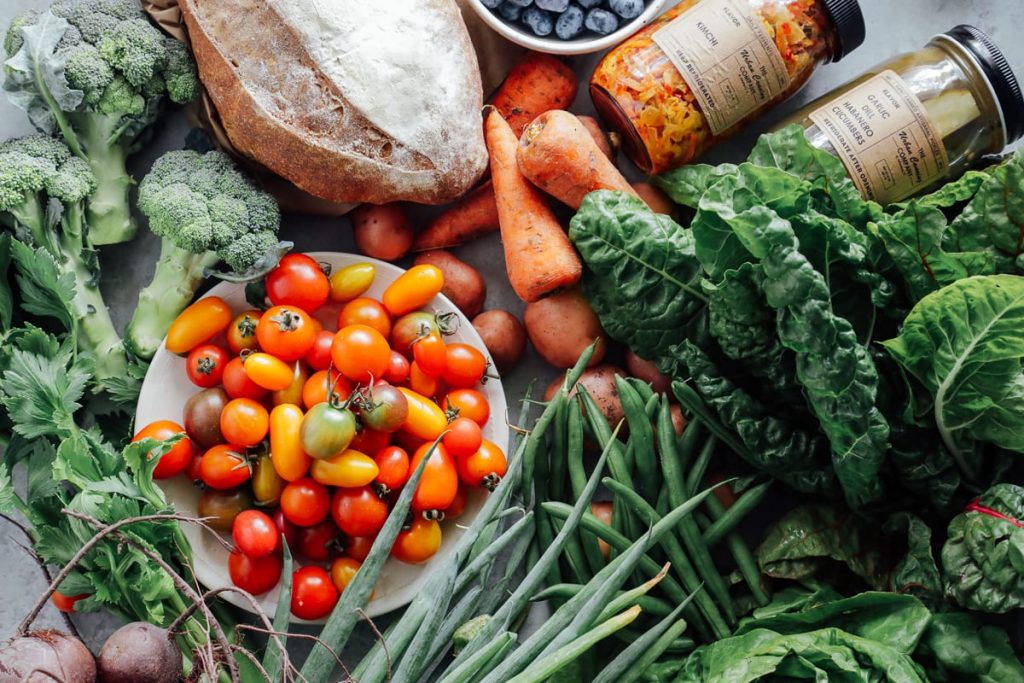
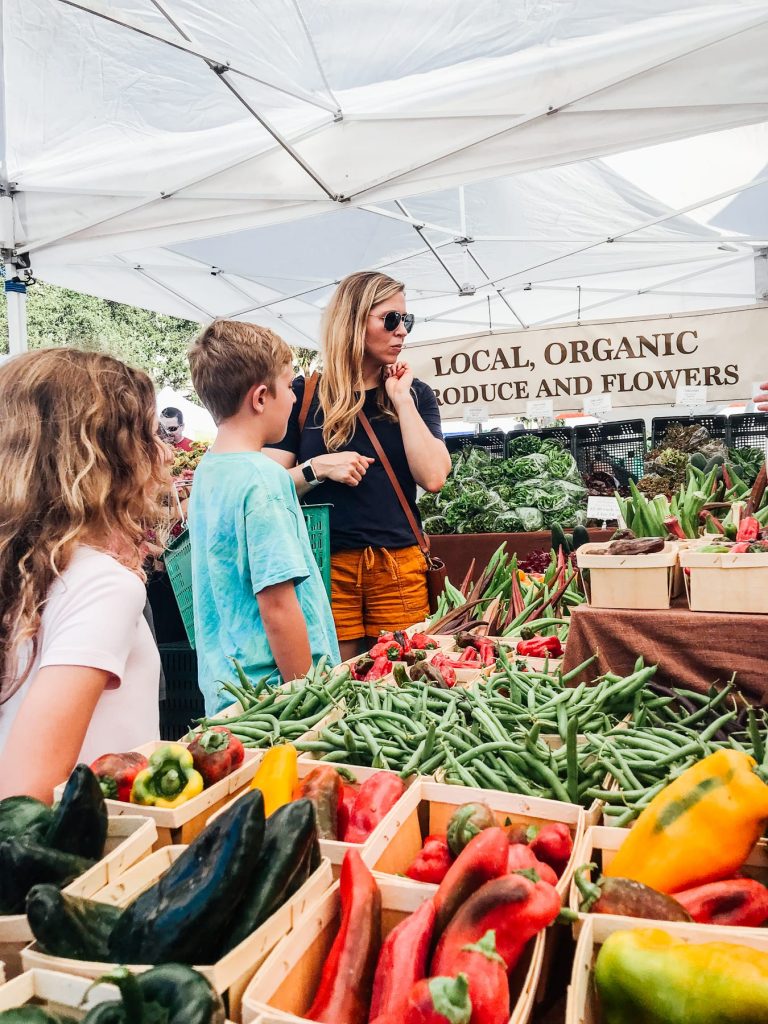
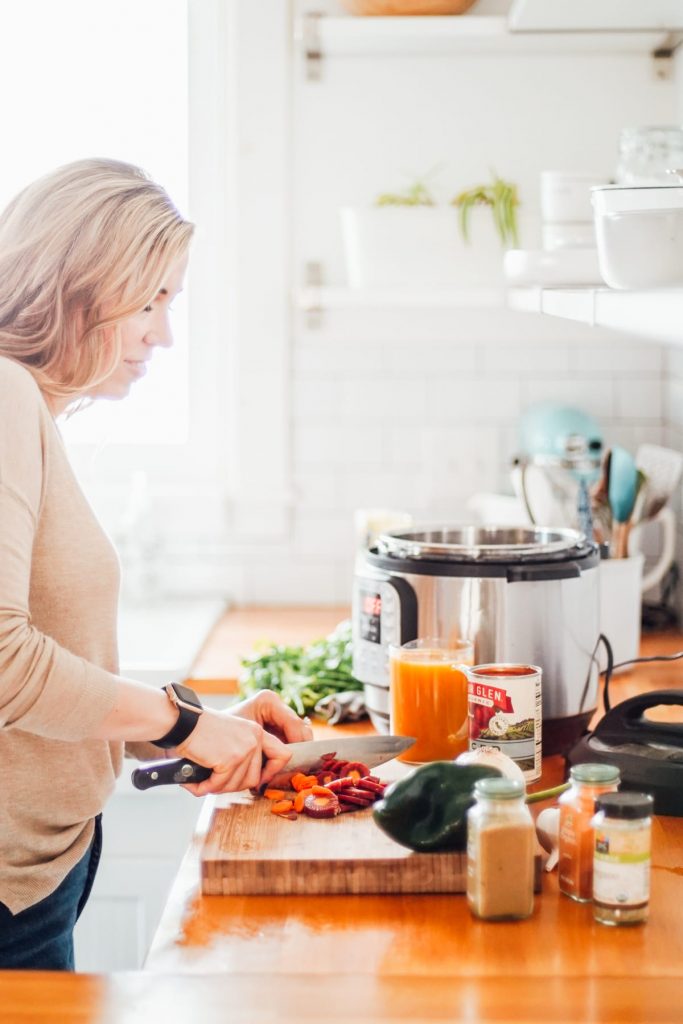
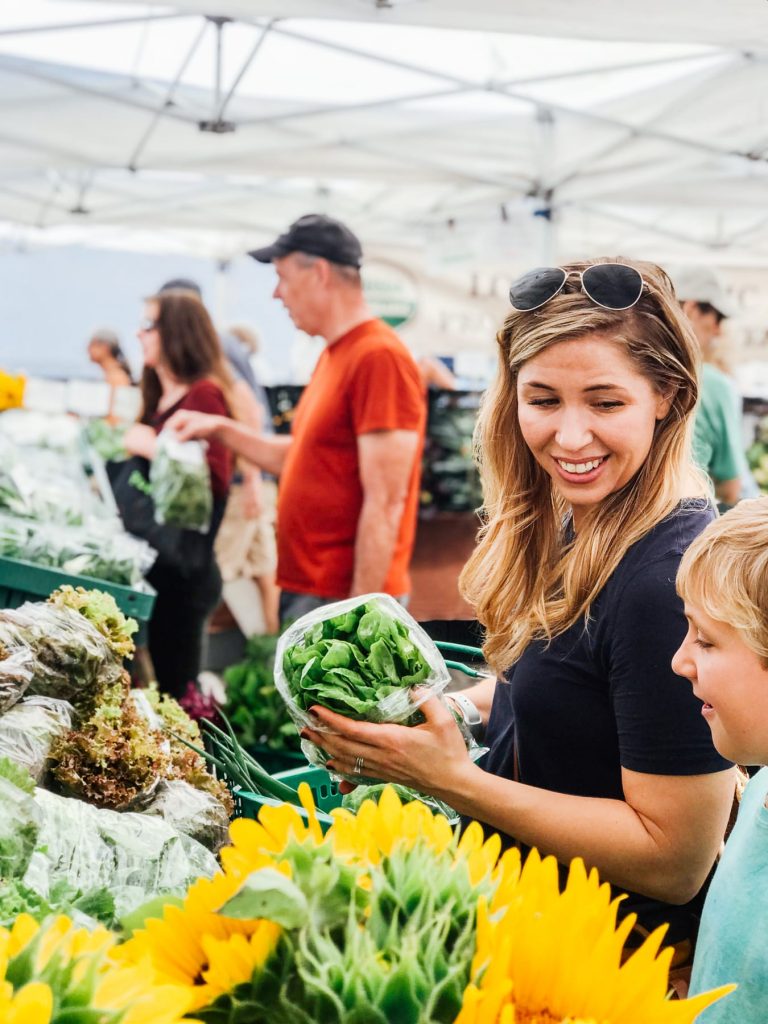
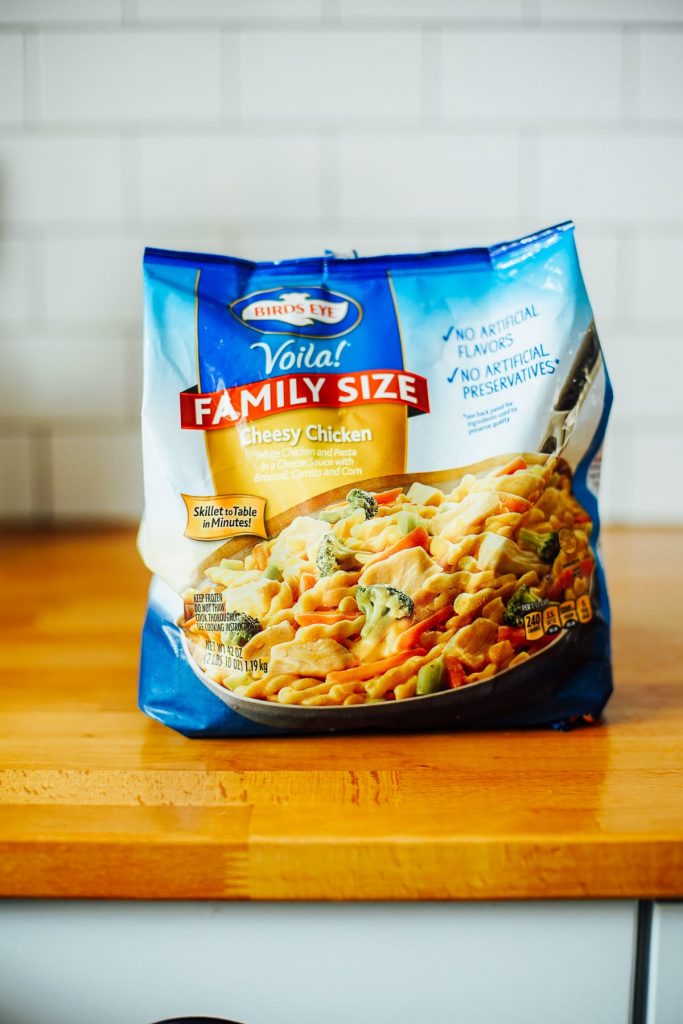

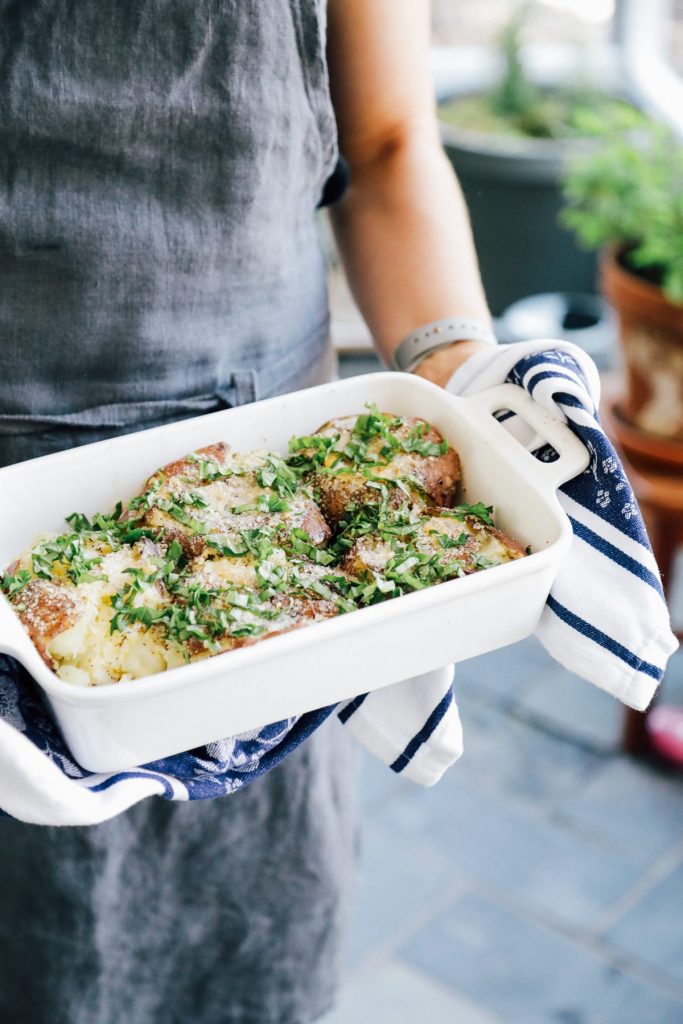
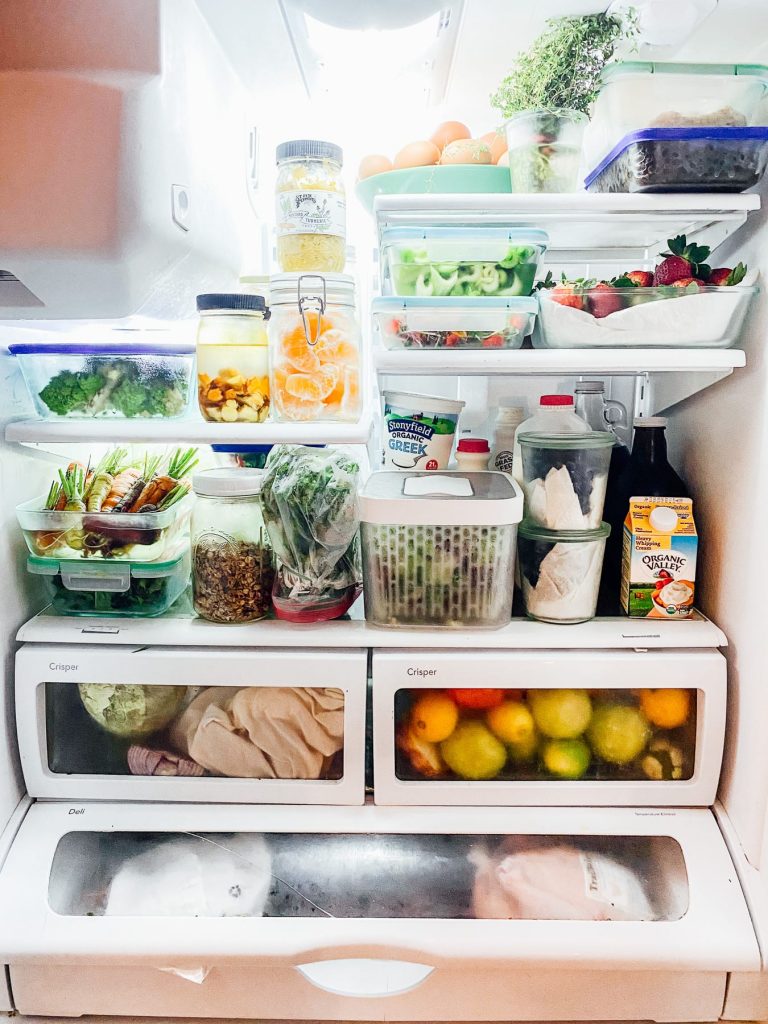
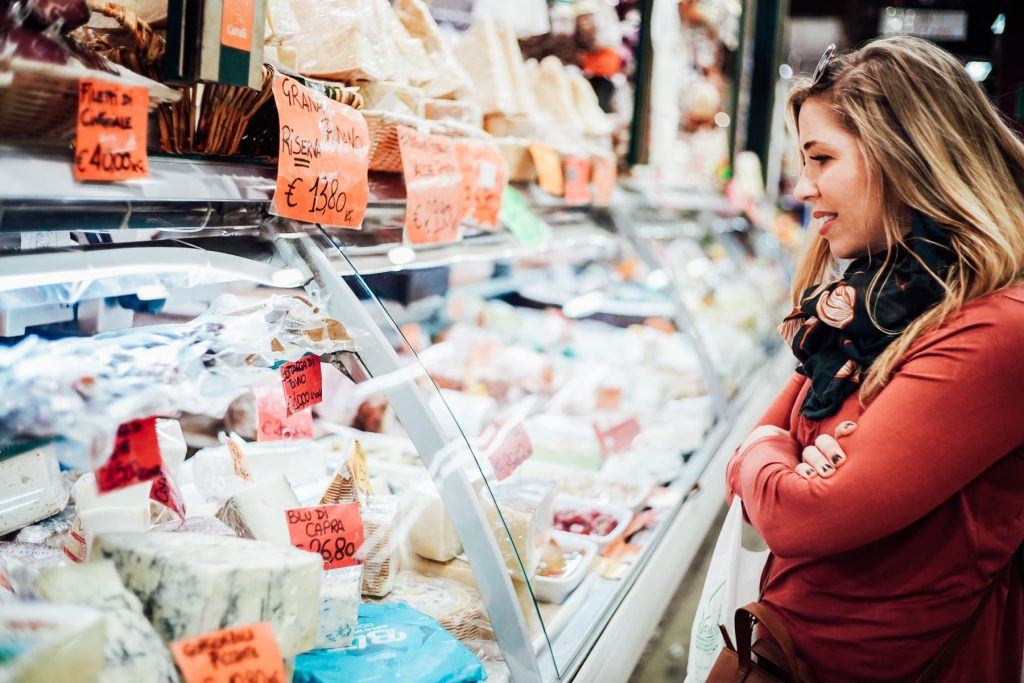

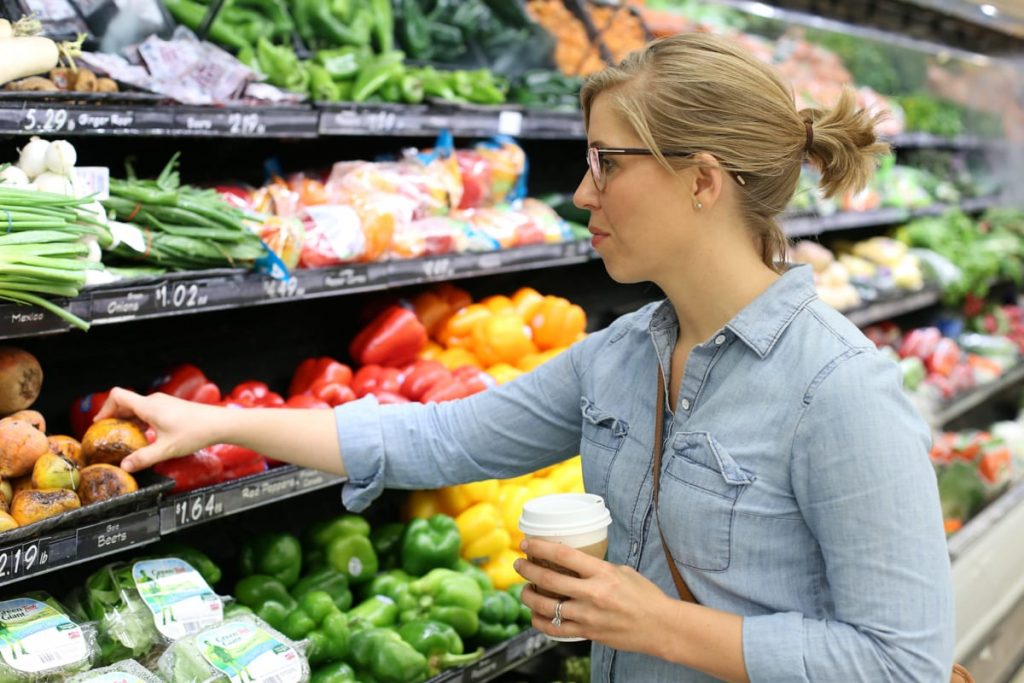
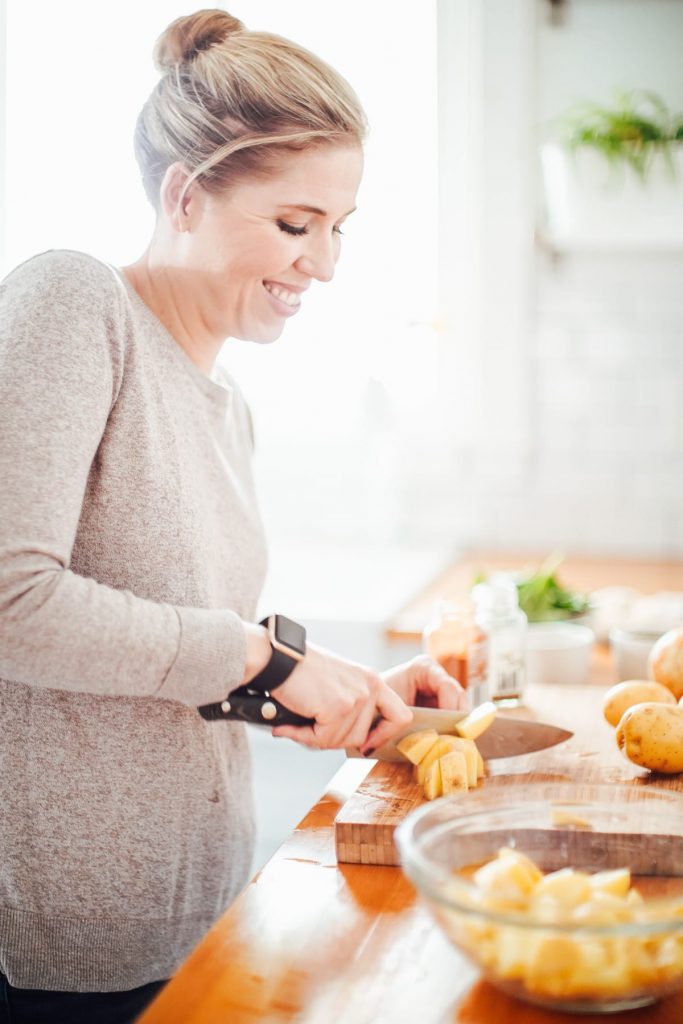
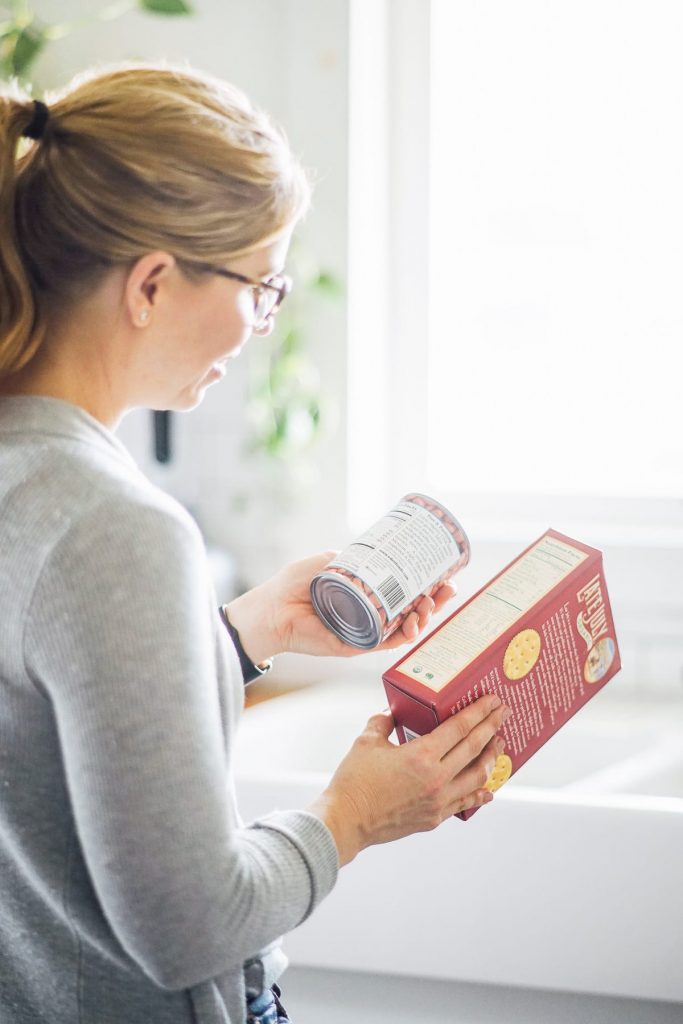
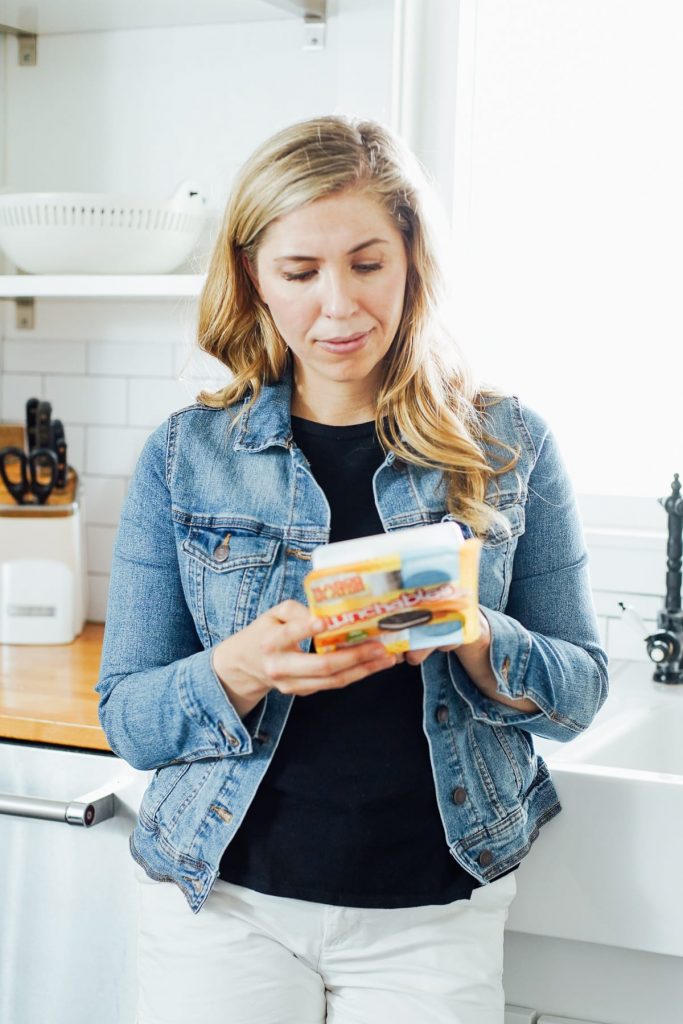
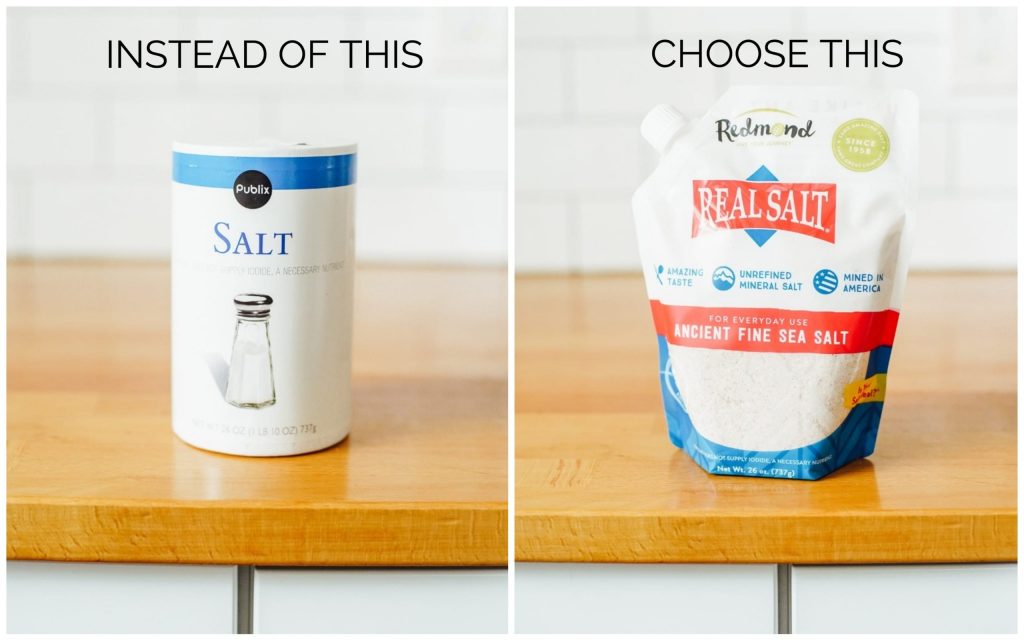
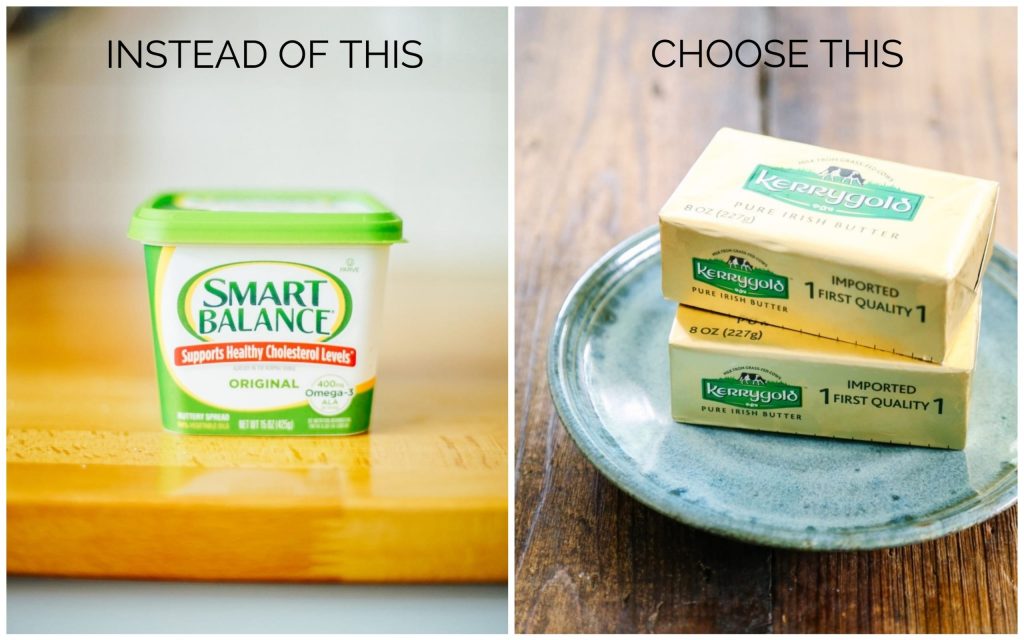
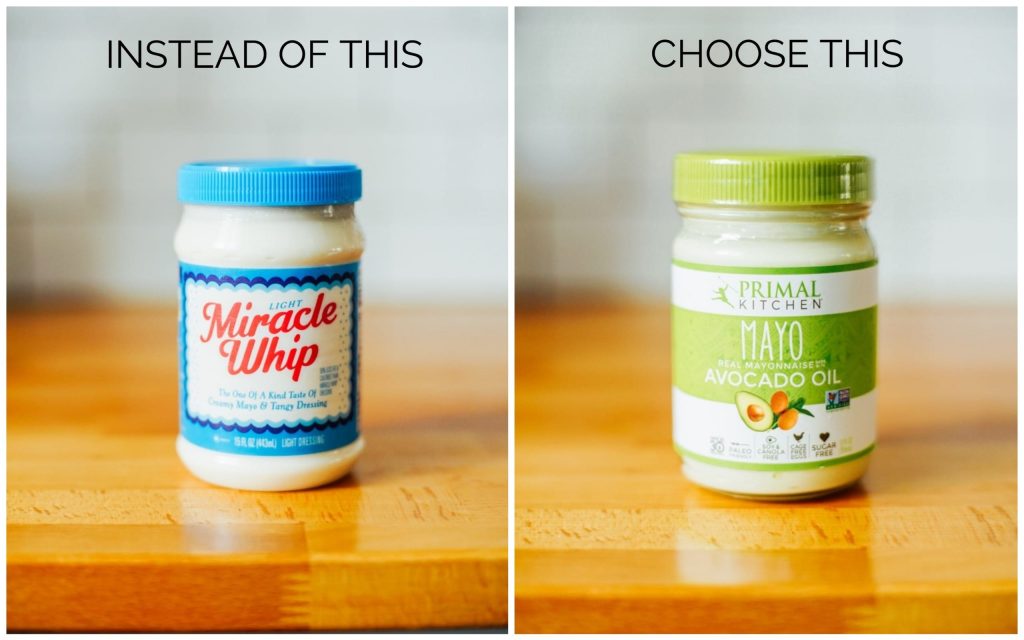
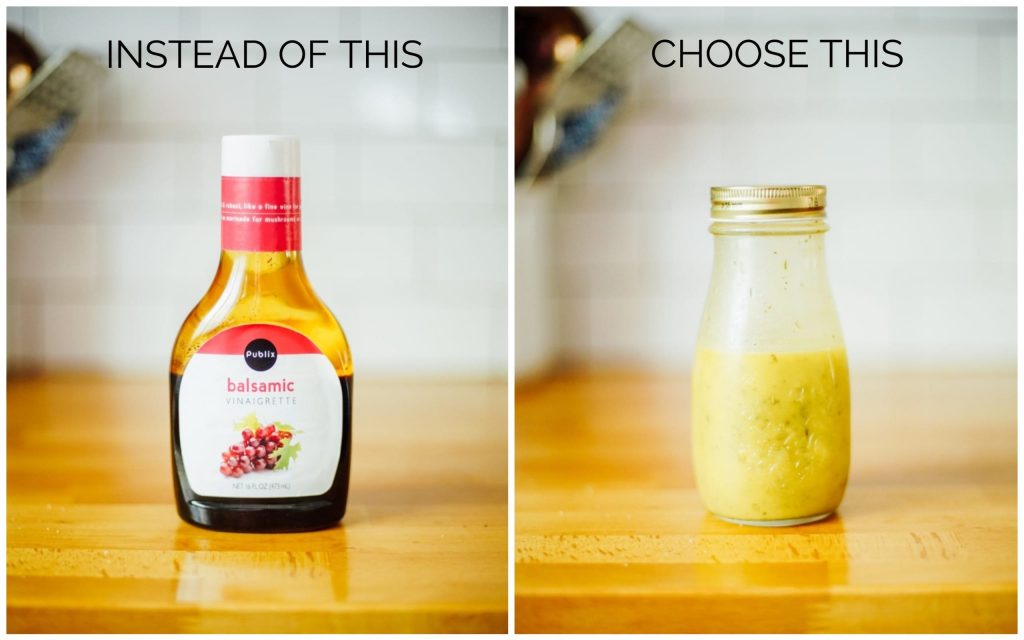


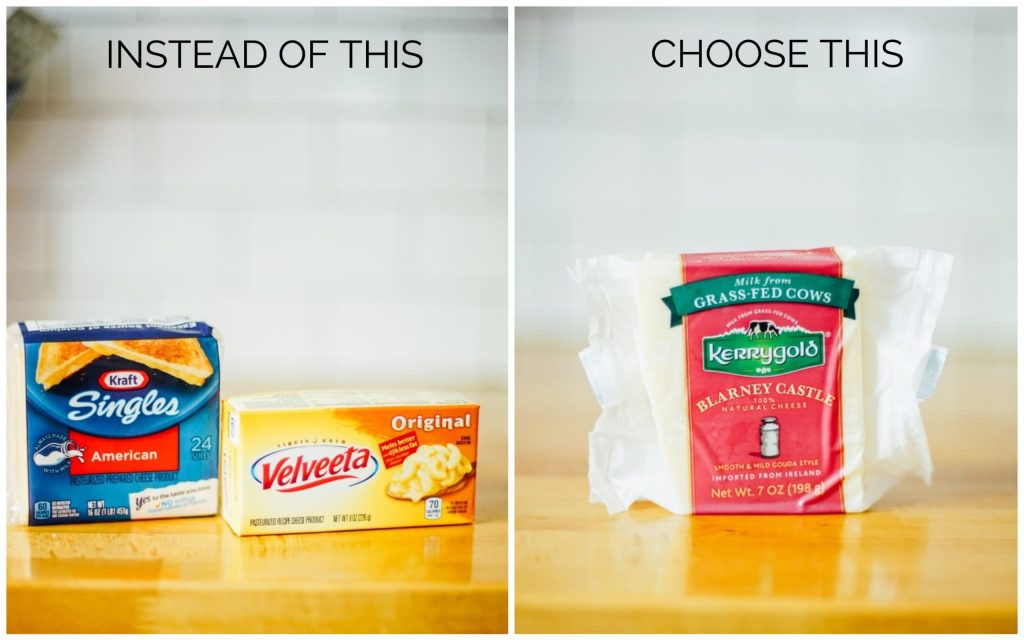
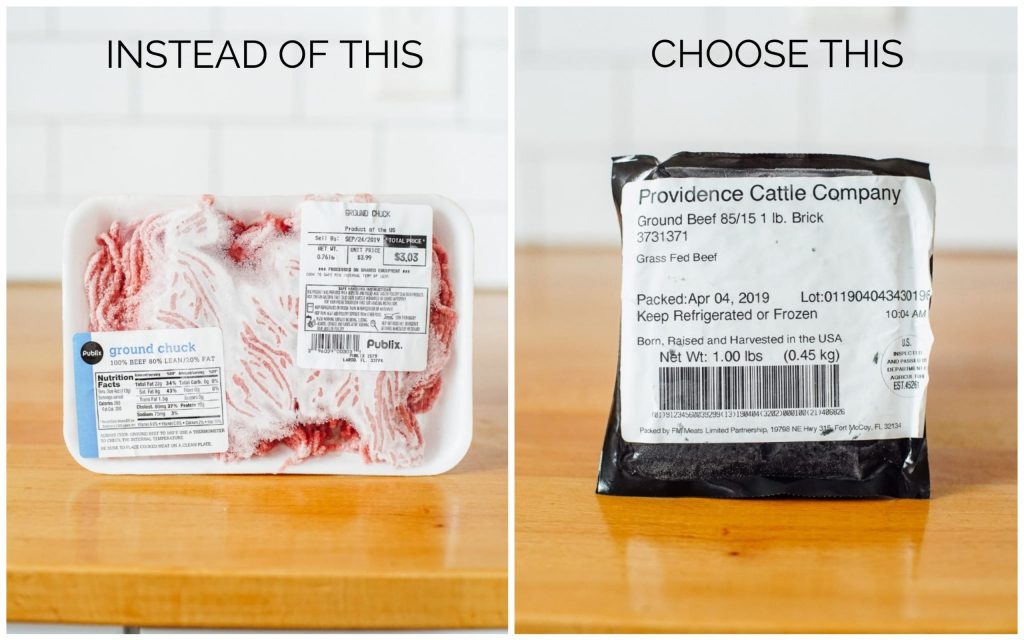
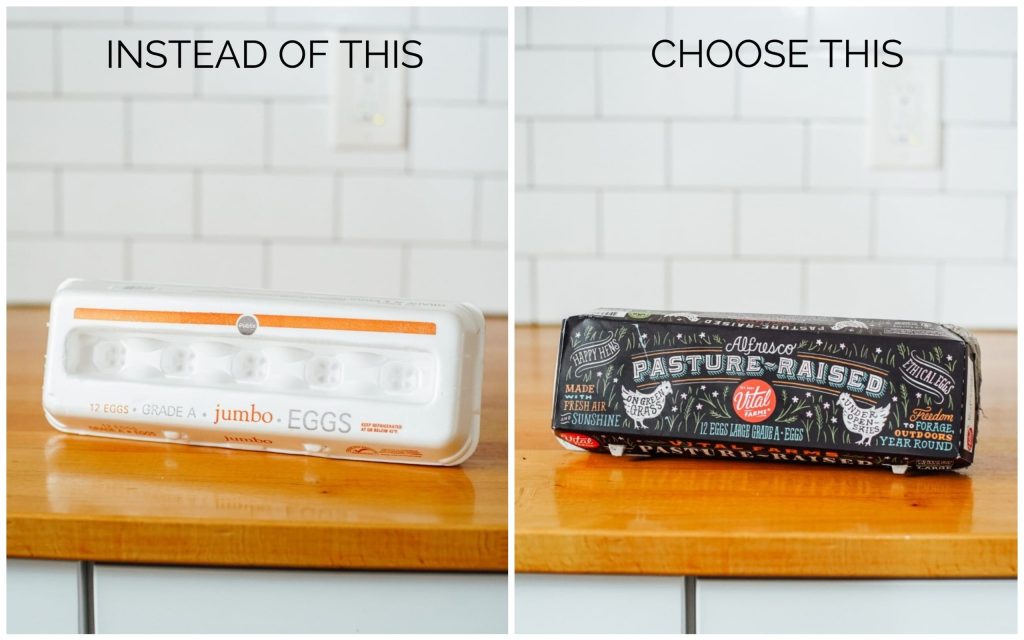
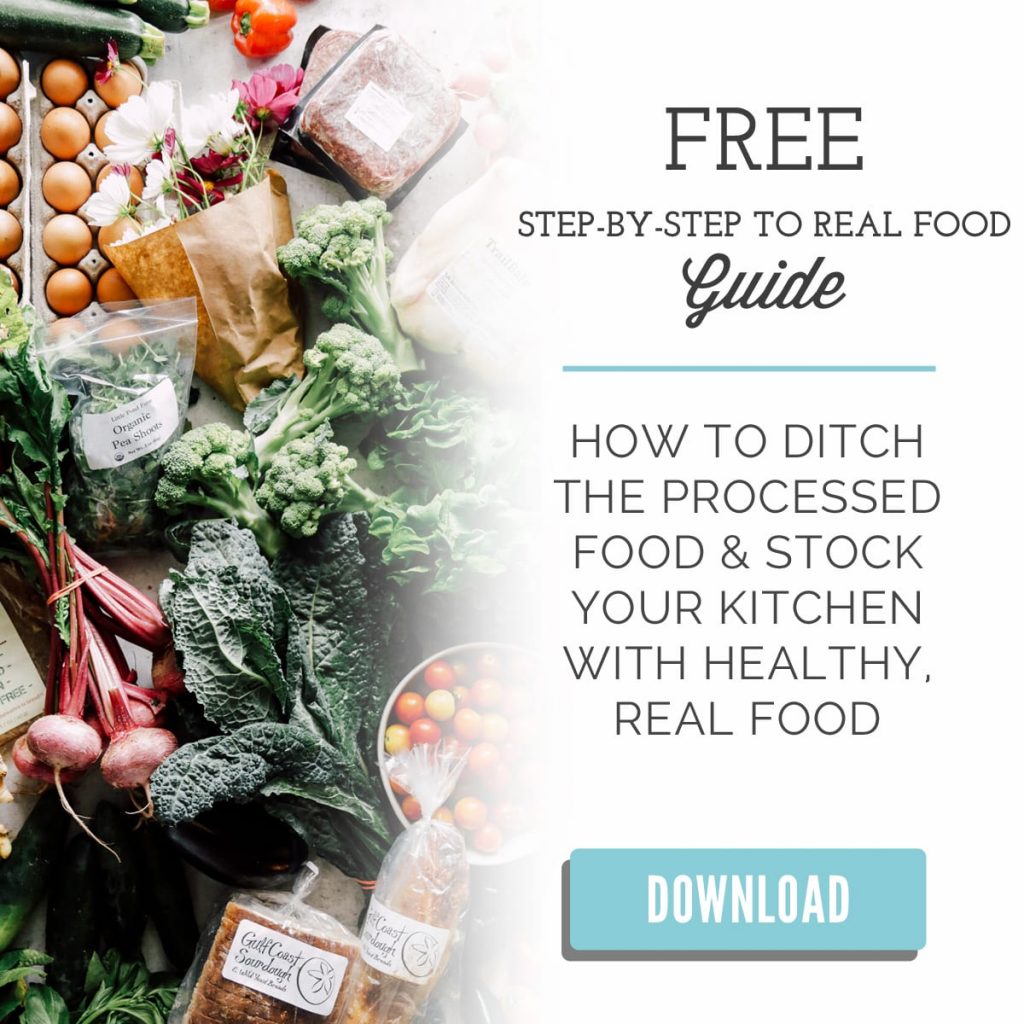
As a real food person for some time now, I want to say thanks for helping to get the message out that it is not difficult to make these switches. When you do, it doesn’t take long to feel the difference. A few simple changes make a really big difference in your wellbeing.
Thank you for the kind words, Linda. It’s so true, 100% agree. A few simple changes make such a huge difference.
This post is so much more than just a food swap list – it’s practically a complete guide!
These tips are all those I try to follow myself and promote, and seeing them laid out step-by-step in a way that makes it clear why we should eat real food (/whole food), how we can, and some top examples is absolutely amazing.
Thanks for such great content Kristin! 🙂
Best wishes,
James
Thank you, James!
We have drastically changed the way we eat over the past couple years. We have never really eaten alot of processed food. I have mostly cooked from scratch my entire life (my mom did/does so). My husband tells people we don’t have food in our house we have ingredients because we have to prepare it to eat it. Anyway this article is great! It has given me some additional information and options to switch over to for some of the things we have struggled to find in our local stores.
That’s great, Rebecca!
Thanks for sharing, it means a lot to Live Simply.
LS Team.
Interesting article Kristin. One image really caught my eyes though.. the one of the inside of your fridge and I was wondering if there was an article already about that (pardon me, I don’t really follow your blog but randomly fell upon it today. Found it interesting how you put carrots in water and I see paper towels as well. Is there an in dept article on how to keep your produce as long as possible? If so, I would be really interested in reading it. If not, you should really make one!
Hey Irene, Thank you and welcome! This is the post you’re looking for: https://livesimply.me/real-food-fridge-tour/ There’s a video in this post where I go into how I store everything in my fridge to keep it fresh.
Awesome! Thank you so much 🙂
Great article, Kristin. What do you think of Pete and Gerry eggs??
Hey Terri, Thank you, So glad it was helpful. I don’t know too much about Pete and Gerry’s. From their website, they point out that their eggs aren’t pastured, just free range: https://www.peteandgerrys.com/blog/pasture-raised-eggs I recommend calling them and asking how their chickens are raised–ask about feed, living conditions, how much room the chicken have, do they roam outside and for how long? That will give you a good idea of their practices. A company that’s raising animals this way will be very transparent in their practices and very proud to share. Here’s their phone number (from the website): 1-800-210-6657
What a great post! The visuals are so helpful and fun. We’ve been trying to eat read food for the past maybe 6 or so years but I still love to read posts like this! What I’m wondering is did you have to buy the products you don’t consume for this post and what did you do when them afterwards! haha!
I’m so glad you enjoyed. That’s a great question, Tierney. Yes, I had to purchase them. I actually have a small stockpile of things like the Velveeta in my office for this purpose. Most grocery stories won’t let you bring a camera in store (we had to get top PR permission many years ago when we did the grocery store posts and it was so time consuming). So I just have a small stockpile of items that I’ve accumulated for teaching purposes. The great thing is the shelf life of these products is scary long, so they will last as a teaching example for years ;).
Thanks for this list!
You’re welcome, Tiffany! So glad it was helpful :).
I have been reading this blog for years. It is a very helpful resource for me as I lead my family on our health journey.
That’s wonderful, Diana! Thank you for the kind words. LS really appreciates it!
LS Team.